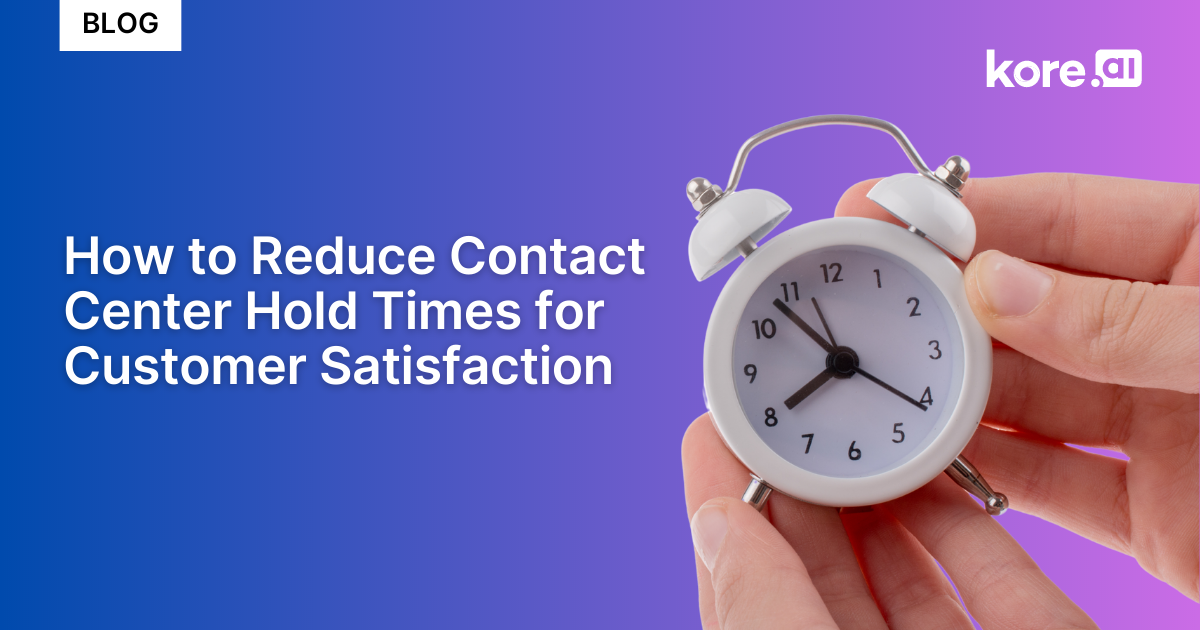Customers expect prompt and efficient service when they reach out to a company which can be hindered by long hold-times in the contact center – a frustrating part of the customer experience.
In fact, hold-times are so important that:
- A Harvard Business Review study found that each year Americans spend 37 billion hours waiting in a queue.
- The most common form of poor customer service, according to 56% of those surveyed, was long wait times with 70% of respondents saying it’s harder to reach a real person.
- 15% of people waited on hold for more than 15 minutes during their most recent customer service experience.
- Wait times are so unattractive to consumers that Walt Disney World continuously reevaluates their processes to shorten queue times and limit customer frustration.
- Callers who wait longer than expected use more of contact center agent’s time when they reach their turn.
How Companies Can Optimize their Hold Experience
There are many strategies that contact centers can employ to optimize their hold experience to increase customer satisfaction such as providing informative messages and music during hold-times, offering customers the option to receive a call back, accurately estimating hold-times and regularly monitoring and improving call center operations.
Provide a Clear Estimated Wait Time
One of the most frustrating aspects of the contact center experience is the uncertainty of not knowing how long a caller will have to wait on hold. Providing a clear and accurately estimated wait time can help manage customer expectations and reduce frustration.
In a blog discussing best practices to use when using Amazon Connect, a cloud-based call-center service, Amazon advises: “It is recommended to play a range of time, instead of a specific number to the customer. For example, “Your wait time is between four and eight minutes.”
A study conducted by Harvard University analyzed more than 100,000 calls and found that less-patient callers who would probably drop out of their place in line anyway were weeded out by a pessimistic wait-time estimate. This call abandonment created lower hold-times for other customers while preventing further frustration for those less-patient ones.
Utilizing technology like automated voice prompts and chatbots can provide customers with an estimated wait time, ultimately reducing frustration during the hold experience.
Offer Call-Back Options in Your Queue
Providing a call-back option is another great solution to minimize customer frustration and reduce wait times during the hold experience. Customers can leave their phone number and receive a call when an agent is available, eliminating the need to wait on hold altogether.
While implementing this strategy, Amazon found that acceptance rates for callbacks were high when the wait times were high, and vice versa indicating the process was successful for customer satisfaction.
Use Messaging Effectively
Hold messaging can provide useful information to customers, such as recent promotions or frequently asked questions.
With a personalized hold message, companies might be able to resolve the customer’s inquiry faster by redirecting to an alternate channel like automated self-service or live chat, if available. By providing relevant information while customers are waiting in a queue, such as playing a list of required documents for a new loan application or sharing basic troubleshooting steps for technical support, businesses can keep customers engaged and reduce frustration during the hold time.
Empower Agents with the Right Information and Tools
When customers do reach an agent, they want their issue to be resolved quickly and effectively. A conversational AI platform like Kore.ai SmartAssist utilizes omnichannel functionality to provide agents with the context and continuity of the customer’s journey up to the moment of connection. This eliminates the frustrating need for customers to repeat their issue while providing agents with the right information and tools they need to quickly access customer information. Agents are able to resolve issues faster which further helps reduce wait times and creates a better overall customer experience.
Use Data to Identify Wait Time Issues
By tracking wait times and analyzing customer feedback, contact centers are able to identify areas where hold times are consistently longer than expected. Data can also be used to authenticate customers waiting on-hold allowing for quick resolution once the caller is with a live agent. Addressing these issues using a platform like SmartAssist offers real-time roles-based analytics dashboards that can identify areas for improvement, reduce wait times and improve customer experiences in the future.
How Companies can Lower Hold-Times with Kore.ai SmartAssist
Effective management of caller wait-times is crucial for preserving a company’s brand identity and reputation. Contact center reports have found time and time again that customer satisfaction is a unique brand differentiator and shortening wait times for customers is the key to providing this level of service. By implementing these strategies, contact centers can reduce customer frustration, increase customer satisfaction and build customer loyalty with your brand.
We know that lowering contact center hold times to create an exceptional customer experience can feel overwhelming to accomplish. With Kore.ai SmartAssist, companies can offer an AI-powered omnichannel, contact center solution that detects customer intent to intelligently route callers while providing self-service automation.
Want to know more about how to transform your contact center and deliver an exceptional customer experience? Try it yourself for free!







